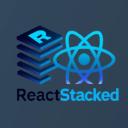
Enhance React With Useoptimistic In 2025
Discover react 19’s useoptimistic hook in 2025 for instant ui updates. learn its benefits, setup, and tips for responsive apps.

0
0

Discover react 19’s useoptimistic hook in 2025 for instant ui updates. learn its benefits, setup, and tips for responsive apps.
